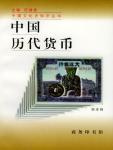Chapter 1 Section 1 Bei Coin is the earliest currency in China
Money arises spontaneously in long-term commodity exchanges.In the exchange of commodities, a commodity must be selected as a measure to measure the value of other commodities. People call this special commodity that can act as a general equivalent currency.In ancient times, the production level was low, and people were self-sufficient without exchange.In the Neolithic Age 7,000 years ago, there was a direct exchange of barter.In the late stage of the primitive commune about 5,000 years ago, both production and exchange developed, which required a recognized general equivalent as a medium of exchange for indirect exchange.At the beginning, food, livestock, fur, farm tools, fishing and hunting tools were used as the medium of exchange.However, these items are inconvenient when used as a medium of exchange, and a kind of seashell is gradually used as a general equivalent in the exchange.Because the shape and size of seashells are relatively stable, the colors are beautiful, and it is more convenient to count, carry and store, they are very popular.Later, pearls, jade, tortoise shells, clam shells, gold, silver, copper and iron were used as intermediaries, and then metal coins appeared.
The origin and development of Chinese currency is no exception.In ancient Chinese literature, there are many legends about the origin of currency.For example: "Hanshu·Shihuozhi" says: "In the age of Shennong", there were "golden knife turtle shells, so there are those who share the wealth and benefits." "Historical Records Ping Zhun Shu" said: Before the Gaoxin family (about the 24th century BC), there was "the currency of turtle shell money knife cloth". "Beginner's Notes" said that during the time of the Yellow Emperor (about the 26th century BC), "copper from the Shoushan Mountain was first picked and cast into a knife." "Ancient and Modern Zhiping Lue" contains: "Fuxi's family gathered copper from all over the world... thinking it was a thorny coin... and the coins started from then on... Shennong's Lie ㄽ [chan tangled] in the country to gather goods and silk... Huangdi's made the currency To control the country...Tao Tang called it the spring...Yu then took the gold coins from Lishan Mountain...Tang made the gold coins from Zhuangshan Mountain in all directions...", there are also "Tong Zhi", "Tong Dian" , "Bamboo Book Chronicle", "Guanzi" and many other ancient history books have records of the use of currency.As Tai Shigong said, these legends have a long history and need to be verified.In recent years, through a large number of archaeological excavations, many seashells from the 21st century BC have been unearthed, as well as many imitation shellfish such as stone shells and clam shells.The mutual confirmation of unearthed cultural relics and historical materials reveals the historical appearance of the origin of Chinese currency.In the Shang Dynasty from the 16th to the 11th century BC, the exchange of goods developed rapidly. Light and sharp metal tools were widely used, the production level increased, the social division of labor became more and more specialized, and the exchange broke through geographical restrictions, and the demand for currency expanded accordingly.Bronze smelting in the Yin and Shang Dynasties was quite famous. For example, the Simuwu Ding unearthed in Anyang in 1946 weighed 1,370 jin. It was extremely exquisite and showed superb production technology.A large number of unearthed cultural relics from the Yin Ruins and various places in Henan and Shanxi strongly demonstrate that the industry and commerce of the Yin Shang was very developed and needed more currency.At that time, the currency unit of shellfish was "friend", ten shellfish per friend.The shells used as currency are called tooth shells and cargo shells. They are made of big shells, purple shells, etc., and the back is ground and drilled.There are also many imitation shells, including Tao shells, pottery shells, stone shells, bone shells, copper shells and gold-coated copper shells that have been discovered. Metal coins gradually appeared in the late Yin and Shang Dynasties.
In the early Western Zhou Dynasty, Taigong Jiang Shang formulated the currency management method for the Zhou Dynasty - "Jiufu Yuanfa", which clearly stipulated the specifications of the three currencies: "A square inch of gold weighs a catty; money is round and square, and the weight is in baht; The width is two feet and two inches, and the length is four feet. It is mentioned in the book "Guanzi" that in the Zhou Dynasty, "the pearl and jade were used as the upper coin, the gold was the middle coin, and the knife cloth was the lower coin."It is also said that Yu and Tang both opened mountains to collect gold coins.Zhou Zhiquan's cloth is today's money. "From its source, it is said to be a spring, and since its distribution is not stagnant, it is called cloth." It is for profit. Those who make goods use it to transform it and pass it on for profit." (Volume 345 of "The Collection of Ancient and Modern Books·Shihuodian").In the historical records, it is also recorded that Shan Mugong advised Zhou Jingwang not to cast big money, talked about the disadvantages of casting big money, and put forward a set of currency theory of "children and mothers have the same power", which has a great influence on later generations and is also the earliest currency theory in the world. .From the above historical data, we can see the development of currency at that time.

